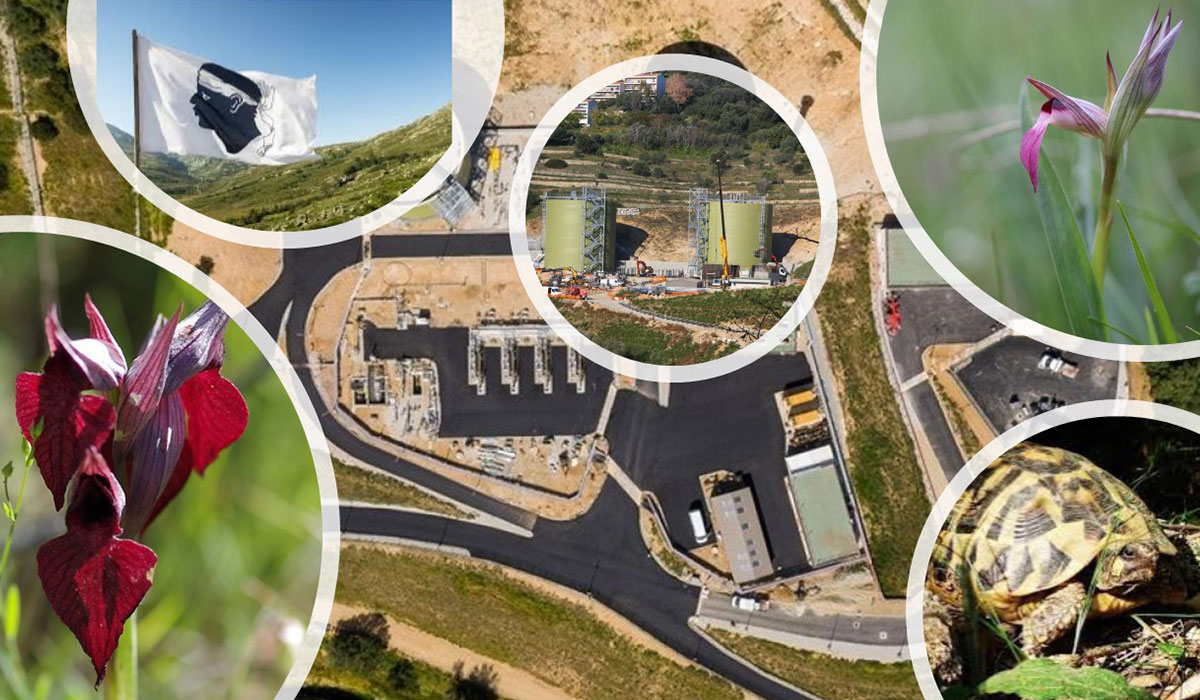

« By building a new gas station in Ajaccio, we are reducing our areas of effect. From one kilometer radius involving a population of over 8,000 people, we are moving to a 170 meter radius area requiring only a few window changes to not worry anyone. » |
The most novel and engaging chapter of the Loregaz project, however, lies in the aspect of environmental preservation and active protection of the site's biodiversity. Nowadays, to be granted a prefectural operating order, a company must not only provide impact studies (technological, health, sound) but also be in compliance with the "ARC" sequence resulting from environmental protection law. This text asks manufacturers not to disturb the species in the environment in which they are established by measures of Avoidance, Reduction and Compensation.
Guy Mogenot willingly admits it: there are worlds between him, an industrialist, and the researchers at the Conservatoire des Espaces Naturels de Corse!
« I know how to talk about calculations, I know how to talk about industrial risks, but when I had to talk about the evolution of the turtle or how we do a census, a translocation or a transplantation, I was a little lost, hence the need to identify a person at ENGIE who can decode this language and these specific practices and act as an intermediary between me and the CENC "
Indeed, the
notions of performance and time for an industrialist are almost the opposite of
those of a researcher in biology: one is required to provide data quickly with
a high mastery index, the other must respect the natural time of the species he
studies and has per force learned to accept that one cannot completely control
Nature. To allow these two worlds to dialogue, ENGIE's LPG department called on
Denis Leca, Biodiversity Manager who has worked for Storengy for many years.
Denis has a major role in the advancement of the Loregaz project so that the commitment imposed by the State on ENGIE (to protect biodiversity for 20 years on Corsican land qualified and quantified by the CENC) is kept in a sustainable and optimal way. His first intervention was to recreate a link between the industrial team and that of CENC biologists.
Denis Leca and Pierre-Yves Maestracci, an intern working with Denis, succeeded by dint of patience, popularization – even translation – but also by transposing administrative requests into concrete action plans, understandable by all those who have to follow them.
Hermann's Tortoise is an endangered species that is the subject of numerous protection actions, particularly in Corsica. Its decline is mainly due to forest fires and urbanization, threat factors that have been on the rise for the past twenty years. | |
| Serapias neglecta, and Serapias parviflora are the two species of rare wild orchids identified on the Loregaz station host site that ENGIE has undertaken to protect on the compensation land, with the support of the conservatory of natural areas of Corsica (CENC). | |
Guy Mogenot concludes: “It is absolutely fascinating, but in the 30 years that I have been working on industrial projects, I have never encountered this kind of constraint over such a long period of time. These constraints have a cost, which must be anticipated. It would seem logical to me that this support service or these skills be more developed and deployed in the Group as a cross-functional support function in its own right”.